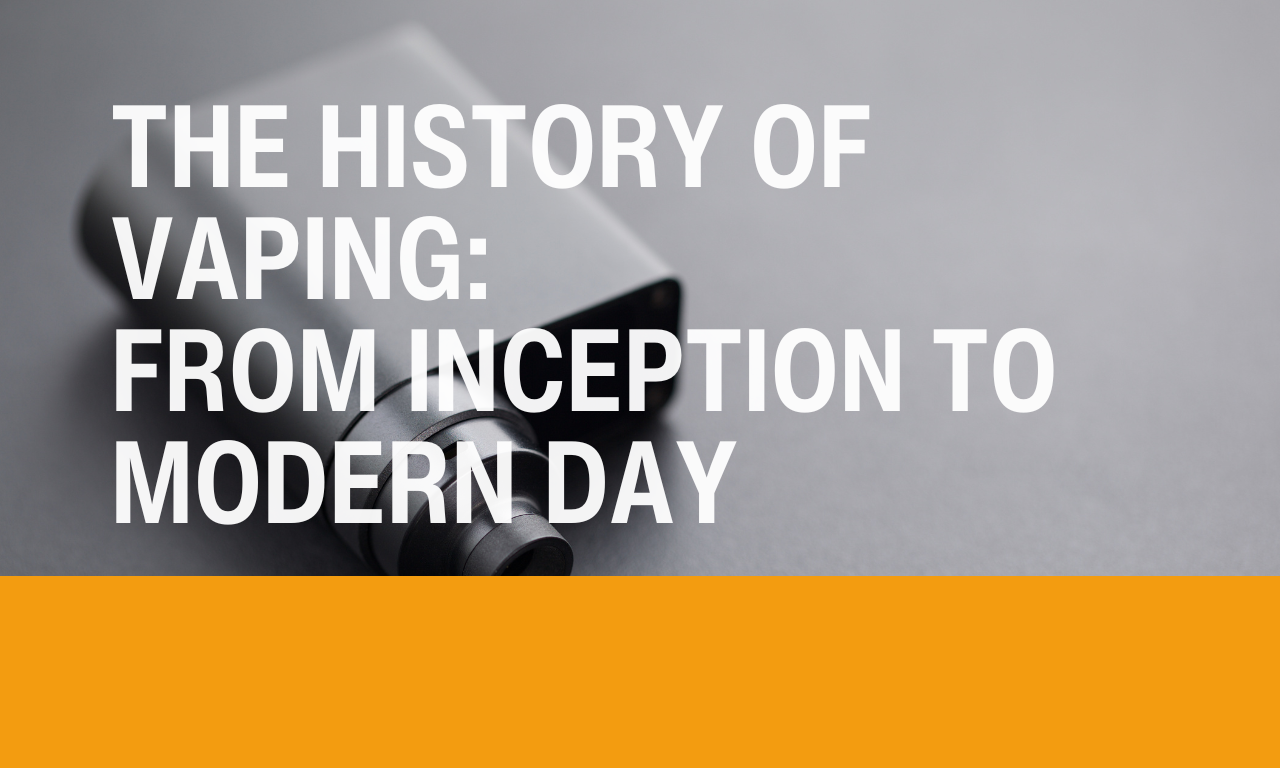Vaping has evolved significantly from its early beginnings to the sophisticated devices and diverse culture we see today. This blog takes a historical look at the development of vaping technology, key industry milestones, and how vaping culture has transformed over the years.
Early Developments in Vaping Technology
-
Herbert A. Gilbert (1963): The concept of an electronic cigarette was first patented by Herbert A. Gilbert in 1963. His design aimed to replace burning tobacco with flavoured steam. Despite the innovation, it never reached production due to a lack of interest and technological limitations.
-
Hon Lik (2003): The modern e-cigarette was invented by Hon Lik, a Chinese pharmacist, in 2003. Driven by the loss of his father to lung cancer, Hon developed a device that used a piezoelectric element to vaporise a nicotine solution. This device was introduced to the Chinese market in 2004 and is considered the foundation of contemporary vaping.
Key Milestones in the Vaping Industry
-
2007 - Introduction to Western Markets: E-cigarettes were introduced to the U.S. and European markets around 2007, sparking widespread interest and laying the groundwork for a global industry.
-
2010 - The Rise of Mods: The early 2010s saw the advent of "mods" — customised e-cigarettes with advanced features such as variable voltage and rebuildable atomisers. This allowed users to tailor their vaping experience, leading to greater personalisation and innovation.
-
2015 - Nicotine Salts: Nicotine salt e-liquids were developed to provide a smoother throat hit at higher nicotine concentrations, making vaping more satisfying for heavy smokers transitioning from traditional cigarettes.
-
2016 - FDA Regulation: The U.S. Food and Drug Administration (FDA) began regulating e-cigarettes as tobacco products, affecting how these products were manufactured, marketed, and sold.
-
2020 - Disposable Vapes: The popularity of disposable vapes surged due to their convenience and ease of use, especially among new vapers.
How Vaping Culture Has Changed Over Time
-
Early Adoption and Community Building: Initially, vaping attracted former smokers seeking a healthier alternative. Online forums and local vape shops became community centres where enthusiasts shared knowledge and experiences.
-
Mainstream Acceptance: As vaping grew in popularity, it gained mainstream acceptance. Vape expos, competitions, and conventions became common, celebrating vaping culture and innovations.
-
Social Media Influence: Platforms like Instagram, YouTube, and TikTok played a significant role in spreading vaping culture. Influencers and reviewers amassed large followings, influencing trends and educating the public.
-
Regulation and Public Health Debate: Vaping has been at the center of public health debates, with discussions focusing on its potential as a smoking cessation tool versus its appeal to younger, non-smoking individuals. Regulatory measures have aimed to balance these concerns.
-
Current Trends: Today's vaping landscape is diverse, with a variety of devices and e-liquids catering to different preferences. Innovations such as pod systems and improved battery technology continue to drive the industry forward.
The history of vaping showcases significant advancements and cultural shifts from its conceptual stages to the present day. As technology continues to evolve and regulations adapt, the future of vaping promises ongoing innovation and growth.




